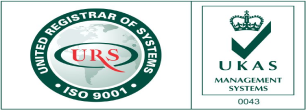
Reach an optimal heavy equipment thermal management using 1D/3D co-simulation
Regardless of harsh conditions (temperature variation and dirty environment), operators from the agricultural, mining and construction fields always rely on their heavy equipment to accomplish their work. To reduce downtime and safety risks, powertrain management systems must be robust in both high and cold temperature conditions.
For any thermal engineer working in heavy equipment manufacturing, it is crucial to design a reliable system that considers all the attributes impacting machine performance. To succeed, they must use the right simulation solutions to predict the powertrain thermal management performance. Thus, they can define the correct cooling system architecture from component to integration levels.
Why is heavy equipment thermal management critical?
Heavy equipment vehicles are used under very tough conditions. In frigid areas such as Alaska or Siberia, the temperature can drop to minus 60°C. So heavy machines must be warmed up before operating. This requires focusing on powertrain and hydraulics warm-up. And also to look at airflow traveling through a grill that can be blocked by snow or ice. It consequently entails working on fuel consumption optimization, hydraulic system defrosts for actuation. As well as focusing on engine after-treatment system consideration, while catalyst reactions do not properly happen under a certain level of temperature.
On the other hand, when operating in hot zones, cooling the powertrain system while operating in often dusty conditions is mandatory. That avoids overheating and powertrain breakdown. The following working conditions impact machine heat management:
- operating cycle, which generates more heat to and from engine components. Tthe powertrain is compact and consequently more difficult to cool down with convection
- the low speed of the machine means impacting the fan rotary speed on the cooling system.
- dusty and muddy environments that can block airflow
For an electrified machine, it’s different. The architecture of the power source is more complex and so requires focusing on components such as batteries, inverter and electronics, and less on the engine, which is producing less heat.
Evaluating thermal management system over transient operation cycles with 1D/3D co-simulation approach
Today – at best – companies leverage 1D system simulation for rapid early system layout. Once finished, they use the outputs of the system simulations as boundary conditions for more detailed three-dimensional CFD simulations. However, companies often do not leverage a true feedback loop of 3D CFD results into the system simulation. So they consequently are thereby missing a big opportunity to further save cost and time.
System and 3D CFD simulation complement each other. Typically, 1D simulations are fast and deliver predictions for how the complete system will perform and respond to the range of conditions seen in active service. However, many modelling assumptions are made, and there is no way to account for effects of detailed geometry. In return, 3D simulation can bring that level of detail and precision.
By turning the order system first, detailed 3D simulation second, upside down and leveraging 3D simulation results in the 1D model allows users to get a better prediction of how the product will perform under everyday use without expensive testing. This can be done through a truly embedded 3D CFD. When dealing with large scale system or long transient scenarios there’s a phase where there is an overlap between the use of 1D and 3D tools. This is where a combined approach will significantly boost efficiency. With this, engineers can realize virtual prototyping and create a digital twin to improve, secure and fasten product development.
Enabling shorter development cycles through integrated unified solutions
Using identical software tools in different groups across an engineering organization can significantly improve collaboration. Provided a solution caters to the requirement of various engineering groups, say the powertrain department and thermal department, having one tool allows them to build a reusable knowledge base between the different teams, which helps decrease training and support. With their wide breadth of multiphysics capabilities both Simcenter Amesim and Simcenter STAR-CCM+ can get all those engineering groups covered.
Concrete application case using Simcenter Amesim and Simcenter STAR-CCM+ for thermal management optimization
# 1 – How to warm-up the machine systems
The engine must reach its optimal operating temperature as fast as possible for two main reasons:
- It reduces the engine friction losses that are higher when the lubricating oil is too viscous due to low temperatures. This has a direct impact on fuel consumption
- It increases the exhaust gas temperature for the after-treatment devices to be able to treat the HC, CO, NOx and soot produced by the engine
To properly warm up the engine coolant temperature, you can use several technologies like electronically controlled thermostat, electric coolant pump, PTC heater, heat storage tank or waste heat recovery system.
You can virtually compare those technologies using system simulation to assess their benefits in terms of fuel consumption. Hideo Kobayachi et. all. describe that technologies comparison in the paper “Multi-Physics System Simulation for vehicle energy management optimization”,
Tobias Winter, head of the simulation department at Hatz, says, “We are required to deliver engines that provide strong output power but consume less fuel. It’s inconceivable today to design new turbocharged engines without the help of high-performance simulation software. A multidisciplinary system simulation platform like Simcenter Amesim gives us a clear view on all mechanical, hydraulic and thermal aspects of the design.” (read the complete story: https://www.plm.automation.siemens.com/global/en/our-story/customers/hatz-diesel-engine-cooling/41822/)
#2 – How to ensure optimal powertrain and comfortable cabin temperatures
a – Define the perfect cooling system sizing using system simulation
Sizing the cooling system of a heavy machine requires looking at the overall energy balance under the hood and within the cabin while taking into consideration thermal interactions between all relevant subsystems (heat exchangers stacking). Using Simcenter Amesim thermal management solution allows to perform your analysis on a single platform.
System integration is one of the current challenges many face and it requires engine optimal thermal management to ensure high performance, design low-consumption and low-emission engines and provide the best possible operator comfort.
Let’s take the example of a tractor. Assessing the cooling system sizing over different kinds of operations, like the DLG PowerMix cycle (ref. https://www.dlg.org/en/agriculture/tests/dlg-powermix), allow you to verify you pick the best brake-specific fuel consumption and not exceed the top coolant tank temperature required to keep the engine safe.
This evaluation ensures a reduced cooling pack dimension design and a better overall fuel consumption.

Comparison of a viscous fan transmission with a hydrostatic fan transmission over the DLG PowerMix cycle using Simcenter Amesim
b – Embedding CFD into 1D simulation to better consider airflow effect
A smart way to consider these effects in system simulation is by embedding a CFD approach to capture three-dimensional airflow effects. The Embedded CFD approach of Simcenter Amesim combines the system simulation approach together with a three-dimensional CFD approach using Simcenter STAR-CCM+. Described as a hybrid tool between 1D and 3D CFD simulation environments, this tool benefits from both technologies. It offers the fidelity of 3D resolution together with close-to 1D simulation times, all encapsulated into an easy-to-use specific GUI in Simcenter Amesim.
c – Increasing efficiency through 3D thermal and flow field simulations
Having done this combined 1D-3D CFD study brings more accuracy and insights into your cooling package system layout. Once the system shows it can provide the optimal conditions, it’s time to make sure you are achieving the target temperatures of all components. At this stage, engineers need to consider the environment, look for recirculation, assess 3 dimensional effects and interactions and explore component design in detail to make sure they cool properly and with maximum efficiency. This is when pure CFD analysis is needed to consider material properties, Conjugate Heat transfer phenomena and aerodynamics inside and outside the engine compartment in detail. This is where Simcenter STAR-CCM+ can help.
#3 – How to accelerate thermal management optimization thanks to process automation
In order to ensure consistency and maximum workflow efficiency in the evaluation of designs, process automation is important. The target is to link simulation as closely to the CAD as possible and minimize user interaction. Integration of all required simulation steps into one environment has helped customers reduce their turn-around time by over 80 percent.
For a traditional workflow, CAE teams download data from the CAD system. This data is taken to a third-party preparation tool where typically surfaces are simplified, and even components are removed. For a full detail of vehicle, this manual process of CAD-to-CAE preparation takes around 7 weeks. Typically this time-consuming task is done only once or twice. Some CFD codes can only run transient, making a simple soak simulation take weeks to complete. Once done, generally a different program is used for post processing. This makes it difficult to look at solutions while the process is proceeding and understand where heat comes from.
In the Simcenter workflow, we are making use of a predefined template that stores the process from CAD to CAE. All we need to do is tag different materials or assemblies so filters can automatically put these into the new model. This process now takes days, but not weeks. You also have a single solver for both fluid and solid, and can run each region in the time step. That enables running a soak simulation in single day. In addition, the single solver with post processing built in allows insight on what might be causing the part to overheat.
Using simulation for thermal management system optimization, the outcome for the simulation engineer
Making the final user happy is any OEM goals, and thermal engineer contributes to that success by using simulation in the context of thermal management system optimization. Indeed, for the engineer, the outcomes of using simulation are plentiful. For example, they can:
- Build a trade-off between fuel consumption and thermal safety for realistic mission profiles
- Get results quickly to maximize impact design, even for transients
- Prevent thermal failures that would happen late in the design cycle by capturing system’s complexity.
- Finding optimal designs within the design space thanks to built-in design exploration,





